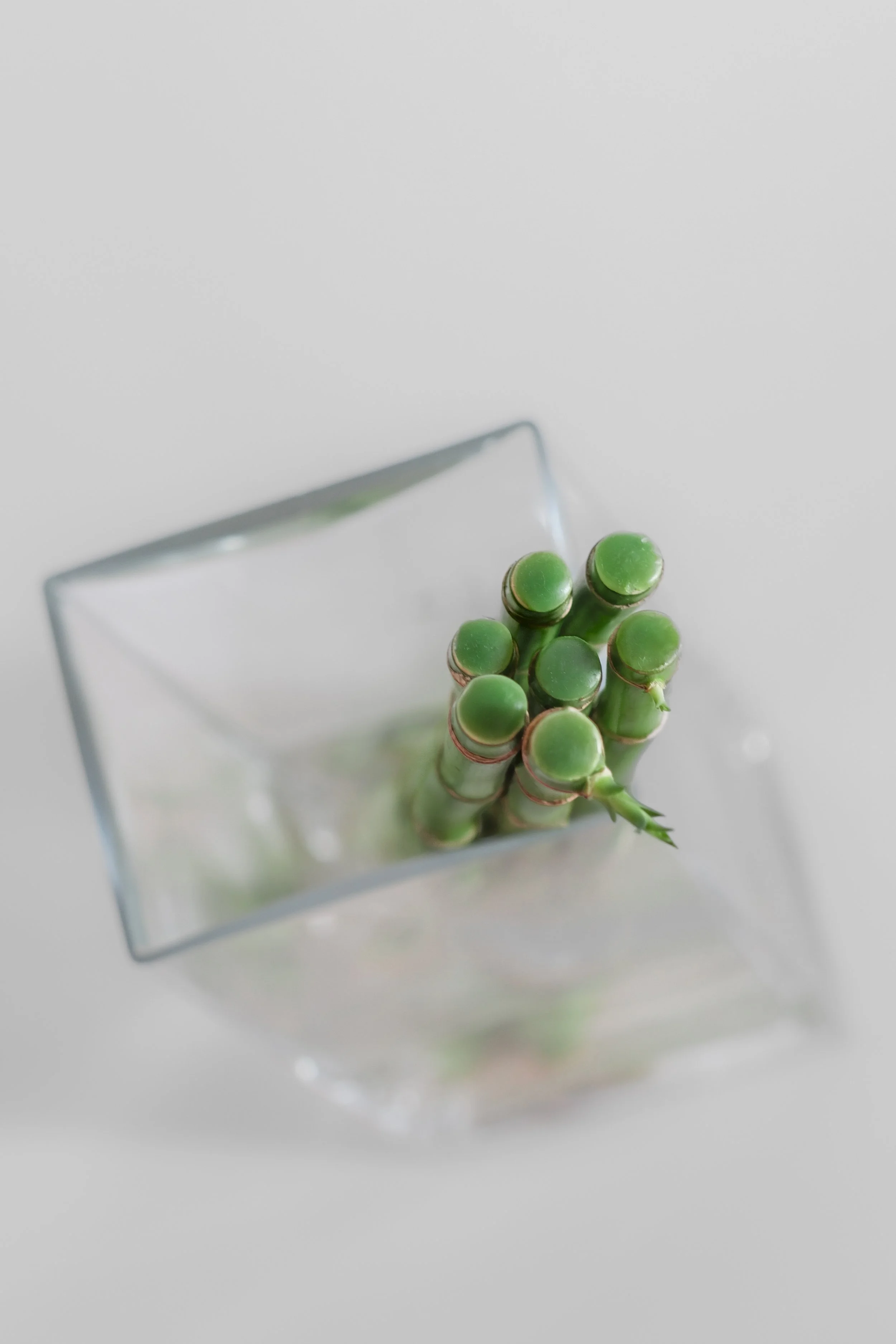All of a sudden I am feeling like some sort of Dracaena sanderiana expert, though until recently I considered myself just your basic D. sanderiana fan. (It is tempting to turn such a quantum jump into some kind of breakthrough take on life, but I’ll stick to the way it confirms how easy it is to care for this plant and get it to propagate.)
Dracaena as a name is tricky, since so many potted varieties of it are clearly not this. Like many people, I used to call it bamboo, which it is not, though one popular name it goes by is lucky bamboo, owing to how it’s used in homes in China, as a kind of charm whose meaning derives from the number of stalks in an arrangement (two for love, seven for health, that sort of thing). Whether it’s likened to bamboo because it looks the part or on account of actual bamboo’s symbolism in Chinese culture is not quite clear to me, a bit of both makes a lot of sense.
I first discovered this wonder of nature when I rented a bedroom in Valeria’s luxurious apartment on NYC’s Upper West Side when I was just out of grad school and working at DDB New York. The green stalks lived plunged in water held by glass and ceramic vessels consisting of right angles and gleaming planes. Straight knobby canes with raggedy root-beards and fiery shoots of spiky leaves at the top. An arrangement adorned every room and filled the mostly monochrome home with equal parts serenity and excitement. (Half of what I consider evidence of my good taste today I owe to Valeria.)
Years later I saw them at IKEA, some straight, others twisted in a top-heavy way I found graceless and gimmicky. I opted for the straight ones, bought some no-nonsense vases, and enjoyed years of effortless plant-based chic until the last of those first sanderianas gave up the ghost. By then they only had those forced spirals for sale and these weren’t for me, so I kept an eye out for the straight ones, in vain. Years piled on but garden centers and IKEA finish lines only offered me curly stalks. I caved in, tried to make do with what was instead of holding out for what wasn’t.
I no longer remember if the urge to hack off those tops came right away or much later, but I do know that my first attempts had two effects. One was unsurprising and consisted in the rapid death of any stem trimmed at the top and then left alone. The second was astonishing—once those unwanted parts were no longer the flaw in the whole, they turned out to have plenty of appeal all their own. (I will again resist the urge to make meaning-of-life inferences.)
Eventually I connected the dots, replicated what appeared to be a seal at the top of the stalk using wax from a candle (in a much better shade of green, in case you’re interested). Now the bottoms were flourishing by sprouting new shoots, the tops by unfurling rootlets. Newly freed architectural columns stood tall and were mine, low tangles of curls claimed territory on a boy’s messy dresser.
I wish more of life were like this seemingly immortal plant form—relentless at thriving in the conditions available, easy-going but quick to adapt, wild/vibrant in a cool/quiet way. But I’ve been told permanence has an end-date and so it goes for lucky bamboo, too. For over a year just one holdout remained, a barely curled spiral of advanced age with a shock of yellowing fronds far taller than the stalk.
Recently I picked up seven new crudely curled sanderianas, looked forward to turning them into two sets of seven, each in its own way exactly what I want. But what happened when I had the green beeswax candle going and the knife in my hand felt not like a task I enjoy performing with increased confidence but rather like a kind of transcendence, a completely unexpected experience of mastery, or of what feels like it (which is always the point, isn’t it, what things feel like?). May other challenges possess as effortless a tipping point.
Want to talk lucky bamboo? Feel free to contact me. Want to talk meaning of life, instead? I’m up for that, too, especially if you have some answers.







